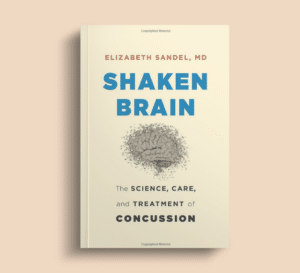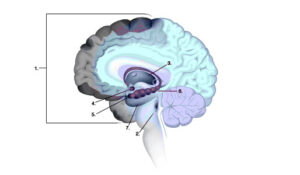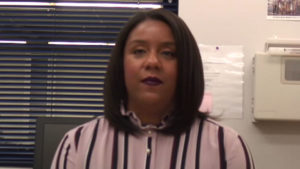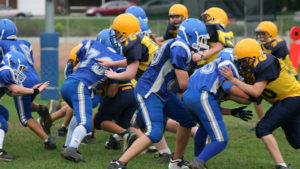The 6th International Consensus Statement on Concussion in Sport–What’s New?

The 6th International Conference on Concussion in Sport was held in Amsterdam in October 2022. Based on systematic reviews by participants from Australia, Canada, Finland, Japan, South Africa, the United States, the United Kingdom, Switzerland, and the Czech Republic of recent concussion research, the group’s Consensus Statement appeared in the British Journal of Sports Medicine in July 2023. The Statement summarizes scientific research and provides updated recommendations for athletes at risk for concussions.
Based on Concussion Research Studies that Met Certain Criteria
I share my responses here to the 6th International Concussion in Sport Consensus Statement and encourage healthcare professionals to arrive at your own conclusions. There is little that is wholly new in this iteration, but time and effort went into reviewing concussion research studies that met certain strict criteria.
Revised Concussion Diagnostic & Management Tools
This most recent Consensus process revised diagnostic and management tools such as the Concussion Recognition Tool-6 (CRT6), and Sport Concussion Assessment Tool-6 (SCAT6, Child SCAT6). The process also introduced a new tool, the Sport Concussion Office Assessment Tool-6 (SCOAT6, Child SCOAT6). The panel recommended that these tools be used in the acute period and for up to a week following a concussion.
Recovery Timeline for Concussion
This Consensus group acknowledges that previous statements about recovery occurring in 7-10 days were probably overly optimistic and discounted the experiences of a significant number of athletes and their families. The new Statement fails to include significant findings from the TRACK-TBI studies of delayed and incomplete recovery after concussion.
“Return to Learn” and “Return to Sport” Guidelines
The new Consensus Statement does not make significant changes from previous Statements in most of its recommendations for prevention, treatment, and rehabilitation. The new Statement includes a few added “return to learn” and “return to sport” strategies regarding rest, exercise, and rehabilitation. The Statement confirms newer research showing that strict rest until symptom resolution, a previous recommendation, is not an effective treatment strategy for concussion. There is increasing evidence that activities of daily living and aerobic exercise, such as walking and stationary cycling, can aid recovery. So can limiting screen time during the first 48 hours after a concussion.
Clinical Concussion Care Categories
The new Statement adds two “R” categories for clinical concussion care: Retire and Refine. “Retire” refers to the need to address issues related to possible career-ending decisions, although the lack of research in this area hampered conclusions. “Refine” refers to the need to embrace ongoing research strategies to advance the field.
Criticism and Responses Regarding the Consensus Process
The International Consensus process itself, beginning with Vienna in 2001, has been criticized for lacking transparency, inadequately disclosing conflicts of interest among participants and sponsors, and neglecting the views of athletes and their families who are suffering from long-term effects of concussions and repeated head impacts. One group, the Repercussions Group (of which I am a member), has pushed to reform the structure and processes of the Concussion in Sport Group. The controversies around the former conference chair, Paul McCrory, have threatened the Group’s credibility.
In response to these criticisms, the 2022 leadership group adopted anonymous voting, considered alternative viewpoints, and required disclosures of potential conflicts of interest, and made efforts to include the views of athletes, including para-athletes. However, it remains unclear how the 31 panelists were selected and who was not “at the table.”. In my opinion, for example, the Group’s failure to include neuropathologists and neuroradiologists as content experts seriously limits their findings.
The new Statement also lacks specific information about the “voices” of the athletes who participated. The group does not appear to have considered the experience and views of stakeholders such as family members of athletes with long-term consequences of head impacts such as Chronic Traumatic Encephalopathy (CTE). The Statement refers to details about “alternative viewpoints” but does not specify what those entail.
Cause for Optimism as Concussion Research and Voices Grow
On a positive note, the Group included an ethicist, and the Statement discusses the need for future consensus processes to address equity, diversity, and inclusion, stakeholder voices, observer input, sustainability and timing of various consensus-building activities aspects, as well as the need to address continuing issues around conflicts of interest and transparency.
For the future, conference attendees identified potential long-term effects of concussions as the topic area most saw as needing future research. The Statement authors noted the “increasing societal concern about possible problems with later in life brain health in former athletes, such as mental health problems, cognitive impairment and neurological diseases.”
Some Concussion Research Studies Not Considered
However, the Statement does not include investigations from brain banks such as those conducted by Boston University professor Ann McKee and her extensive list of collaborators. The Statement deems “insufficiently rigorous” neuropathological and neuroimaging studies that have documented an association of repeated head impacts to later-life dementia and other neurodegenerative diseases. The failure to account for this research at all suggests that conflicts of interest are at play.
In 2022, The National Institute of Neurological Disorders and Stroke (NINDS), part of the United States National Institutes of Health (NIH), issued a statement regarding CTE and traumatic brain injury that goes beyond “association” to “causation”: “CTE is a delayed neurodegenerative disorder that was initially identified in postmortem brains and, research-to-date suggests, is caused in part by repeated traumatic brain injuries.”
Looking Ahead: The 7th International Consensus Statement on Concussion in Sport
The 7th International Consensus Statement on Concussion in Sport is tentatively scheduled for publication in 2027. In the meantime, I believe that critics around the globe will continue to urge the Group to include all scientific evidence as it formulates clinical guidelines and recommendations in its consensus statements.
You Might Also Like
Updating the International Sports Guidelines for Concussion
The 6th International Consensus Conference on Concussion in Sport meets in Oct 2022 to face again the task of revising their sports concussion guidelines. The conference comes in the midst of controversies regarding Paul McCrory, the group’s former chair, and just after a long-awaited statement of causation for CTE from the NIH.
Repetitive Brain Trauma and Chronic Traumatic Encephalopathy (CTE)
There’s a link between chronic traumatic encephalopathy (CTE) and repetitive brain injuries that occur in boxing and American football. This is a progressive neurodegenerative disorder that can lead to severely-disabling neurologic and psychiatric disorders. Learn about the science, diagnostic criteria for traumatic encephalopathy syndrome (TES), and possible treatment approaches.
A Patient-Centered Approach to Concussion Care: CME & Webinar
Elizabeth Sandel, MD, a physiatrist and brain injury medicine physician, and Conor Gormally, co-founder of Concussion Alliance — a young man who has experienced several concussions — present a patient-centered care approach for emergency medicine and primary care physicians.
Concussion in ParaSport
Dr. Cheri Baluwet, a Paralympic athlete, physiatrist and sports medicine physician, has insights on concussion in Paralympic sports, and the differences in evaluation, prevention, and management for these elite athletes.
Concussions in College Athletes
Dr. Melita Moore, a physiatrist, sports medicine doctor, and brain injury medicine physician reports about her experiences when she served as the physician for University of California Davis sports teams. She discusses collision sports such as football and soccer that have a high incidence of concussion, but also other sports…
Concussion and Youth Football: What’s the Score?
Over a million youth ages 6-12 and 1.5 million age 12 to 17 play football, the most dangerous sport in America. Prevention efforts cannot take away all the risk.
Keep up to date
Get updates on the latest in concussion, brain health, and science-related tools from Dr. Elizabeth Sandel, M.D.
By clicking SIGN UP, you agree to receive emails from Dr. Sandel and agree to our terms of use and privacy policy.
Get the book!






